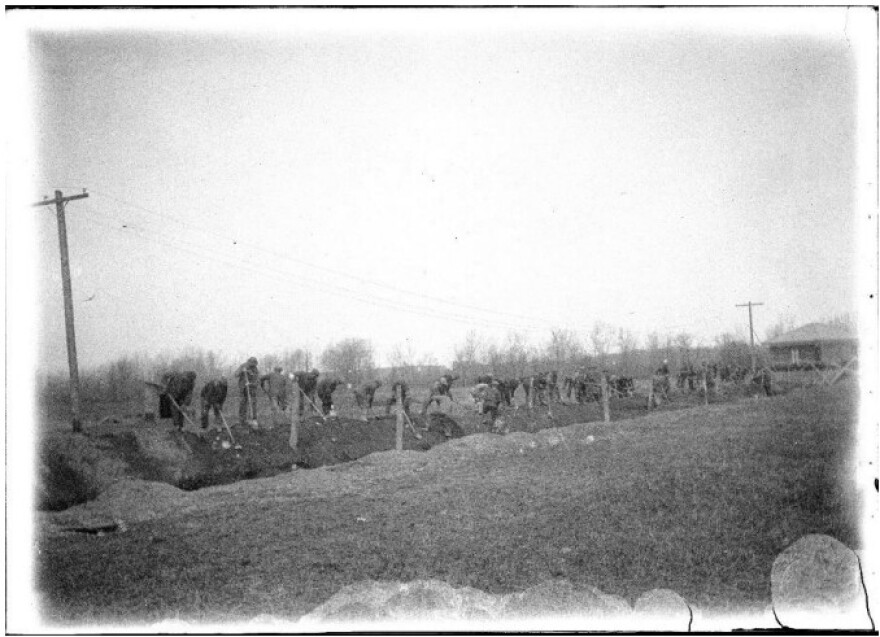More than half a century after the Thomas Indian School closed, local remaining Native American survivors of the institution are telling their stories as part of a national oral history project.
The school, on the Seneca Cattaraugus Territory east of Lake Erie, was one of hundreds across the United States responsible for forced assimilation of Native American children.
Unlike federal Indian boarding schools, Thomas was run by the state of New York for most of its history, and predates the first federal boarding school, Carlisle, in Pennsylvania.
“The school didn't have no wire fence around it," said Seneca elder Elliott Tallchief, a Navy veteran and survivor of the school. “The wire fence is what they've built in our minds. ... We didn't have no say in what they were doing. How am I going to? How am I going to fight that at 5 years old?”
Tallchief is now 85, and he is one of nine boarding school survivors who recently shared their stories in Rochester with the National Native American Boarding School Healing Coalition.
The healing coalition is traveling the country and sovereign nations to record the oral histories of survivors of the Indian Boarding School Era that spanned 150 years.
“They were children when they attended these schools, and they're just sharing this experience now as elders. So it's really important to collect and gather these stories, and be there in support of them during this time,” said oral history program operations manager Lacey Kinnart, whose Ojibwe name is Mukwa Ode Quay.
The stories collected through this project, more than 200 so far, will be publicly available through the Library of Congress as videos and transcripts. It’s part of the Department of the Interior’s Federal Indian Boarding School Initiative launched during the Biden administration.

“Every single Indigenous person in this country has been impacted by Indian boarding schools,” Kinnart said. “We're not taught that as a general public. We're not taught that as Native people to tie all these things together. And the more we learn about it, the more we find out what happened to our family members, the more healing can come.”
The way that the coalition approaches its work with boarding school survivors is intentional and "healing centered," she said. So, relationships are established ahead of time, the process opens and closes with ceremony, meals are shared, and traditional medicine is provided during and after the process.
Afterward, healing coalition staff send a care package and the protocol is to check in with survivors weeks, months and more than a year after the oral history is recorded.
“Our survivors are the priority in this whole project,” Kinnart said. “We don't just come into the community and open up these wounds. It's, we come in and establish relationships with our relatives so that we're just a phone call away."
Rochester was the 12th stop on a tour across 20 states. Next is Milwaukee, Wisconsin, in late June. The rest of the tour is scheduled to continue for another year, before materials are turned over to the Library of Congress — where each video recorded oral history will be housed and made publicly accessible.
The coalition’s visit to Rochester and the Ganondagan State Historic Site took place the same week that Gov. Kathy Hochul came to the Cattaraugus Territory to formally apologize for New York state’s role in running the Thomas Indian School. Tallchief attended the school from about 1945 to the late 1950s, when it closed.
“Over its long sordid history, over 2,500 students passed through the doors, and they came not just from the Seneca Nation, but from others throughout the state,” Hochul said in her apology in Irving. “But instead of being a haven for orphaned children, it became a place of nightmares, a place some would call a torture chamber, a site of sanctioned ethnic cleansing.”

Tallchief didn’t think much of the apology. “To me, it was just political,” he said.
He has spoken previously about the treatment he and his classmates endured, starting when a state social worker placed his sister and him there. They were separated not just from their parents, but also from each other.
“The school was split from the girls and the boys,” Tallchief said in a speech shared by the Seneca Media and Communications Center in 2021. “(I) remember being punished for using our language. They lined us up, put us in the cold shower, wash our mouths out with soap.”
His words are interrupted by poignant long pauses, some lasting half a minute.
“They made us feel like everything we did was wrong. So, it was their way, or get beat up for it,” he said in his speech.
“I can remember, they had visiting day on Sunday. And at naptime, we’d listen to the phone hoping someone’d come to visit us," he said. “We’d get no phone call. So, that was how the day ended.”
For Tallchief, the experience telling his story to the oral historian with the healing coalition was different.
“When you speak, sometimes it's hard to relate to people," he said. “Unless you actually went through the same thing I went through, I don't know how you would get the same feeling out of it. ... I think they had more understanding than other people."
Tallchief has struggled to make peace with the experience. That sense of healing has proven to be elusive.
“I think I'm gonna leave this earth with that same feeling, probably take it with me,” he said. “You have a beginning, and there's got to be an end. You're not going to be here forever. So ... that's what I'm saying, I'm going to take that with me. That would be the time I say I'm healed.”


